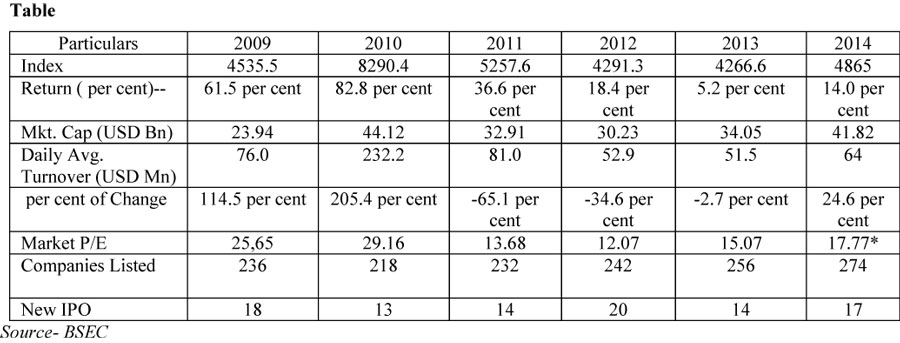Over the past few years, Bangladesh has emerged as an emerging economy. The government has announced a target of achieving double-digit growth by 2021. The role of the private sector will be critical in this respect.
Bangladesh is a country whose youth population is around 55 per cent of the total population. The country has a middle-class population that is larger than the total population of nations like Malaysia, Singapore or Thailand.
Today's world population counts about 1.30 billion people between ages of 15 and 24 years, i.e. close to 20 per cent of the world's population are young. Nearly 87 per cent of these young people live in countries with developing economies. According to International Labour Organisation (ILO) report 'World Social and Employment Outlook - Trends 2018', the global youth unemployment rate stands at 13 per cent while the global adult unemployment rate stands at 4.3 per cent. The youth unemployment rate is three times than the adult rate. Nearly 44 per cent of the total unemployed people are youth while only 25 per cent of the total working population is young.
Today's global youth remain unemployed even after completing their education and gaining university degrees. They need to acquire skills to ensure their livelihood and to realise their full potential they have to prepare for the job market. This reduces the risk of entrepreneurship, acquire confidence and motivation to be an entrepreneur, and get started.

In Bangladesh, government policy is to create self-employment by training and encouraging small businesses among the population. Unemployment of educated youths is one of the major issues in the country that needs to be resolved.
In most countries in the West, start-up companies have been a solution to the youth unemployment problem.
Over the past one decade or more, many creative and mostly young entrepreneurs in developed and developing economies have initiated start-up companies. Once the start-up becomes successful, the entrepreneurs sell the company off to big investors who are able to propose the highest value for them.
With some of the capital gained, these entrepreneurs initiate new start-ups. The cycle continues like this. In some cases, there are hostile takeovers of start-up companies. Through Strategic Partnerships, big companies often provide assistance to start-ups. The partnerships help the start-up companies to simultaneously engage in all the key areas like branding the product, having proper marketing channels, networking etc. Finance is not usually a problem and the new business can be established.
But in Bangladesh, big conglomerates are not willing to give this type of support to start-ups. Additionally, initiating a start-up in Bangladesh is extremely time-consuming, cumbersome and complex, because of bureaucratic tangles involved with starting a new venture. The delay, caused by bureaucratic processes, often discourages many entrepreneurs. Due to the absence of favourable policies, products and new business ideas are often confined to the local market. In most cases, some start-ups would make more money if they go across the border and launch their products in other countries. But most of them cannot do that because of the red tape that is involved.
The branding of Pran in the global market is a good example. Companies should bear in mind that what they can do locally, they can think about it globally.
THE VENTURE CAPITAL INVESTMENT PROCESS: Venture capital (VC) process refers to the investment process followed by any VC company. It starts from the fund raising stage to the points where investment is made. A standard venture capital process usually follows a sequential five-step approach (Isaksson, 2006):
1. FUND ESTABLISHMENT: This represents a stage where the venture capitalist sets out the firm's investment objectives with clear-cut potential investment activity path and finally gathers the needed funds to see-through those objectives.
2. DEAL FLOW: At this stage, a VC firm uses various prospecting tools to identify and select firms with higher growth potential.
3. INVESTMENT DECISION STAGE: This stage includes activities such as evaluations of investment deals received through screening, valuation, contracting issues and financial structuring. According to Tyebjee and Bruno (1984), activities at this stage require more time and industry experience to reduce the risk associated with VC investments.
4. MONITORING AND VALUE ADDING STAGE: This relates to activities and programmes that ensure that the investee firm's business operations are run in line with the investment objective and the activity path set out by the VC firm.
5. CRAFTING AND EXECUTION OF EXIT STRATEGIES STAGE: These are done at the final stage to ensure that venture capitalists conveniently utilise available exit options such as issuing of initial public offering (IPOs) to harvest their investment in the investee firm. Crafting and executing successful exit strategies requires meticulous investment planning before exit date.
FUTURE OF VENTURE CAPITAL IN THE COUNTRY: Bangladesh has experienced strong macro fundamentals among the frontier markets with a CAGR of 6.1 per cent over last decade. It has targeted over 7.0 per cent gross domestic product (GDP) growth target in the coming years. Foreign exchange rate has been very stable. Bangladesh economy has low correlation with the global market and hence investment diversification is easy. Investment in the infrastructure sector is increasing.
Reasonable market price to earnings ratio (P/E) and liquidity in frontier segment have been predicted in the table.
Success in developing a venture capital industry may require adopting an evolutionary-systemic perspective, not only of the processes involved before and during venture capital emergence but also of policy-business sector co-evolution.
The main obstacles in developing a significant high-quality venture capital industry are system failures (and not market failures). This implies that targeted policies aimed at creating a venture capital industry should carefully define policy objectives. Focus should be on system measures & how professional venture capitalists can be attracted. This could channel the industry toward increased investment, according to strict venture capital definitions.
Md. Julker Naim, MPhil is an Assistant Director of Bangladesh Bank and adjunct faculty of European University Bangladesh
naim.jnu.bb@gmail.com
© 2025 - All Rights with The Financial Express
